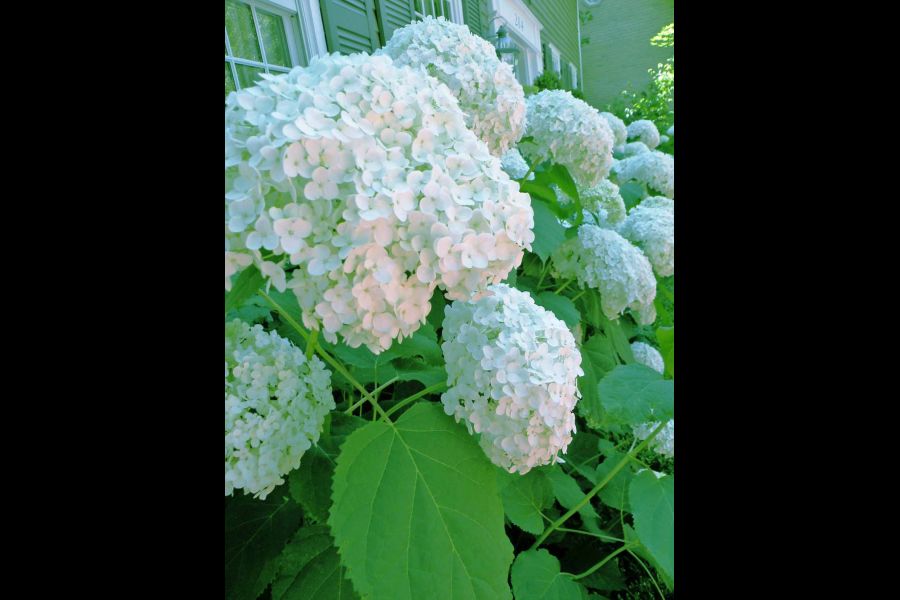Joanne Young
Special to The Lake Report
At this time of year, you cannot walk or drive too far down any street without noticing a gorgeous display of hydrangeas. This is especially true in Niagara.
Although hydrangeas find their origins in Japan, the name itself leads back as far as 1739. A botanist by the name of Grovonius thought that the shape reminded him of an ancient water pitcher. In Latin, the name comes from a combination of two words “hydro” meaning water and “angeion” meaning pitcher or vessel.
Over the last few years, the world of hydrangeas has grown considerably. There are so many new series and varieties that are available for sale at the garden centres.
So why have they become so popular? There are several reasons. The first is, of course, the captivating displays of large, colourful panicles or globe-like clusters of beautiful flowers. There are no other shrubs that give you such large flower heads; they just demand your attention in the landscape. Hydrangeas come in shades of greenish/cream to white to light pink through to the dark pink and purple/blues.
A second reason is their large, coarse, dark green leaves. The foliage alone will make your gardens lusher looking. Thirdly, hydrangeas are one of the longest blooming of any of the flowering shrubs. Some varieties, especially the repeat blooming ones, will start to bloom in mid-June and will continue to flower well into September and even into October.
A fourth reason for their popularity is that they work well with different styles of gardens. Whether your style is formal English, contemporary, traditional or cottage, hydrangeas can fit your theme.
Lastly, if given the right growing conditions, they are also an easy-care shrub. Most hydrangeas prefer a site with light shade and evenly moist soil. Ideally, they do best with four to five hours of morning sun and afternoon shade. They can, though, tolerate a full sun location, but will require frequent watering, sometimes daily in the heat of the summer.
There are too many varieties available to list, but here is an overview of a couple of different species (families) of hydrangeas.
Hydrangea paniculata “Grandiflora,” commonly called PG hydrangeas or panicle hydrangeas, are the ones that you see with the large, creamy white, cone-like clusters of flowers. All the different varieties of PG hydrangeas begin creamy white and as the flowers mature, they all turn to different shades of pink. Some varieties of PG hydrangeas can grow to be six or eight feet high and wide while other varieties will only grow to half that heightl. Some notable varieties are: Lime Light, Vanilla Strawberry, Quick Fire, Little Lime and Bobo.
Hydrangea macrophylla or Mophead Hydrangeas are your typical pink or blue (and some white) ball-like clusters of flowers. Most of the varieties of H. macrophylla will grow from about 1.5 feet to four feet tall. To keep the blue hydrangeas blue, you will need to keep the soil acidic. This can be done different ways such as using aluminum sulphate or mulching with pine needles or shredded oak leaves.
Some varieties of note are: the Endless Summer series (repeat blooming), the Cityline series and the Let’s Dance series (long blooming).
Hydrangea arborescens are the plants that we commonly call snowball hydrangeas or Annabelle hydrangeas. They sport masses of large balls of white flowers that age to an apple green colour. Some newer varieties of Annabelles worth looking at are: Incrediball, Invincibelle, Invincibelle Wee White and Invincibelle Limetta.
The first two grow up to five feet high and wide while the others will go to about three feet.
Hydrangea quercifolia or oakleaf hydrangeas are not as well known but are equally showy. They have large, leathery, oak-shaped leaves. The flower is similar to that of the PG hydrangeas, emerging a greenish, creamy colour, opening to a white panicle and fading to a rose pink in colour.
So, if your summer garden is needing some new life, hydrangeas may just be what you are looking for.
Joanne Young is a Niagara-on-the-Lake garden expert and coach. See her website at joanneyoung.ca.









